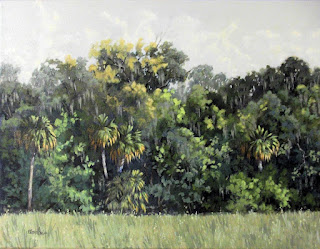Notes From My Tree Journal
A reader wrote to ask why tree trunks crack. Here is some information on that:
Trunk Cracks and Wood Rot
Marianne C. Ophardt
Washington State University Cooperative Extension
Area Extension Agent
Have you ever seen cracks in tree trunks? Radial separations of bark and wood are usually referred to as frost cracks. Almost every reference you’ll look at on tree care blame frost cracks on extremes fluctuations of temperature in the winter. In fact, most sources blame frost cracks on the phenomenon of “southwest winter injury.” This type of injury is attributed to the bark and wood of trees warming up on the southwest side on a sunny but cold winter day. The tissue deacclimates, coming out of its complete winter dormancy. When the sun goes down and the temperature drops rapidly, the tissues can’t reacclimate quickly enough and the water in the tissue freezes, causing cell damage. The theory has been that sometimes this tissue damage can result in wood and bark cracks.
For many years bark cracks and trunk splits were attributed only to frost. It wasn’t until the last twenty years, under the guidance of former U.S. Forestry Service scientist and author, Dr. Alex Shigo, that researchers have realized the real cause of split trunks and bark cracks. Apparently “frost” cracks start from a wound that may have happened much earlier in the tree’s life. These wounds are believed to be formed at the death of a root or branch. This wound can create an internal “crack” that develops as a result of stresses from drying, wind, or temperature extremes. When other pressures occur, such as the thawing and freezing that occurs in the “southwest winter injury” scenario, the internal cracks develop outward.
While the frost leads to a visible crack and open wound, it’s not the real cause of “frost cracks.” The real cause of the cracks are the death of major roots at planting time; physical injury to roots from construction or soil compaction; wounds created by flush cut pruning; dead limbs resulting from topping cuts, physical injury to the tree trunk, and poor graft unions.
What is the problem with cracks in the tree wood? Even though callus forms at the edge of the crack and may appear to close it, the wood will never re-knit together. It’s not like broken bones on humans. Once those wood fibers are split, they are split forever. This weakens the mechanical support of the trunk or limbs involved.
Which came first the chicken or the egg? It was thought that trunk cracks developed first and then the decay developed in the center due to the opening created by the cracks. Shigo discovered that the decay is there before the crack, coming from the dead roots, branches, or wounds which instigated the crack. Additional fungi and insects may attack the tree as a result of the outward crack, but decay organisms are already present before the outward crack develops.
What can be done about split trunks? Not much really. One must realize that most of the wood cells of a tree are dead cells. As I mentioned, they will not “knit” or grow back together. In the case of most trunk cracks, the internal wood of the tree is already subject to wood decay from fungi. The tree may function quite well with little effect from the crack or internal decay, since the vital functions are carried out in the outer few inches of the tree's circumference. The real concern is for the tree’s structural integrity. If wood decay becomes substantial, the tree will become a hazard.
Don’t try to paint or seal the split with any type of compound. They don’t help and they can aggravate the wound. The best you can do is clean or smooth the edges of the wound with a sharp knife. Start at one end of the split, smooth around one side of the wound, going no more than one‑half to one inch back from the split bark. Stop at the other end and do the same procedure on the opposite side of the split. This aids in callus development. Sterilize the knife between cuts by dipping for several minutes in a 1:10, bleach:water solution or a 70 percent alcohol solution.
Occasionally “bleeding” or slimy seepage occurs from cracks and wounds. This is called wetwood or slimeflux. It is caused by an infection of the wood by a bacterium. This bacterium feeds on the sugar in the wood and produces a foul-smelling gas and liquid basically through a fermentation process. The infection can kill some of the bark cambium and can stunt growth but, usually doesn’t kill the tree.
Not all “cracks” are serious cracks that form in the wood. Some cracks are simply bark splits and are not likely to be fatal to trees, although they will, in some cases, allow entry of disease organisms which can lead to wood decay. Most of these bark splits are fairly superficial, forming mainly in the outer bark. Splits occur vertically along the trunk or main branches. In many cases, bark splits will often close or callus over completely leaving only a slight ridge in the trunk.
Causes of these splits include various environmental factors, such as rapid growth spurts, drought, fluctuating conditions of excessive and deficient, temperature extremes, southwest winter injury, late fall growth, and sun scald. Trees that are most susceptible to this type of injury are those with thin bark, such as Kwanzan cherry, maple, and certain fruit trees. Young trees also seem more prone to bark‑splitting than older, established trees.
So the next time you see a bark split or a crack in the trunk of a tree be aware that the real cause of the problem is not frost. They are reminders that tree care from the time of planting to pruning all contributes to a tree’s health, now and in the future.







































